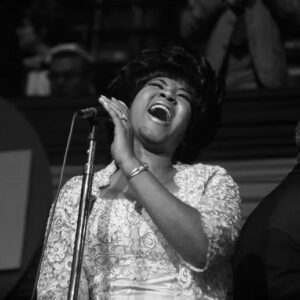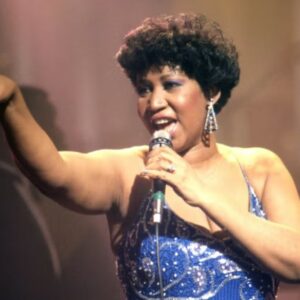Mary J. Blige, often hailed as the “Queen of Hip-Hop Soul,” is one of the most influential figures in contemporary R&B music. From her humble beginnings to becoming an international superstar, Blige has consistently pushed the boundaries of music, transforming the genre and setting new standards for authenticity, emotional depth, and artistic versatility. With a career that spans more than three decades, Blige’s music continues to resonate with audiences worldwide. Her pioneering work in the 1990s and beyond not only helped define the sound of modern R&B but also revolutionized the way artists could blend hip-hop and soul to create something uniquely powerful.
Blige’s journey through the music industry has been marked by bold choices, raw emotion, and an unwavering commitment to expressing her truth. Her impact cannot be overstated, as she has shaped the sound of R&B for generations of artists to come. In this piece, we will explore how Mary J. Blige broke boundaries in music, connected deeply with her audience, and influenced a new wave of artists, leaving an indelible legacy in the process.
Breaking Boundaries Between Genres
In the early 1990s, R&B was dominated by the smooth, polished sounds of artists like Whitney Houston, Mariah Carey, and Anita Baker. These stars were known for their vocal prowess and their ability to deliver emotionally charged ballads. While these artists helped define the genre’s mainstream sound, a shift was in the air—one that would allow R&B to evolve and integrate more contemporary, urban sounds. Enter Mary J. Blige, who revolutionized the genre with her gritty, streetwise take on soul music.
Blige’s debut album, What’s the 411? (1992), is widely regarded as one of the most influential records of the 1990s, a defining moment that melded R&B with hip-hop in ways that had never been heard before. The album’s fusion of soulful melodies with hip-hop beats was groundbreaking, and it marked the beginning of Blige’s distinct sound—what would eventually be dubbed “hip-hop soul.” The album introduced a more urban, raw version of R&B, one that felt more in touch with the realities of life in the streets, while still retaining the emotional depth that R&B was known for.
Her collaboration with producer Puff Daddy (Sean Combs) and various hip-hop artists, including the late Notorious B.I.G., on tracks like “Real Love” and “You Remind Me,” helped define this new sound. By incorporating samples from classic hip-hop records and blending them seamlessly with Blige’s soulful voice, What’s the 411? created a blueprint for how hip-hop and R&B could coexist in the same musical space. This new sound was fresh, energetic, and reflective of the urban experience, setting Mary J. Blige apart from her contemporaries and positioning her as a leader in the evolution of the genre.
Blige’s fearless experimentation with hip-hop also introduced a new kind of authenticity to R&B. At a time when many R&B artists were still focused on traditional love ballads, Blige embraced the grit and resilience of urban life. Her lyrics weren’t sugarcoated or idealized—they were real, raw, and relatable. As a result, her music resonated deeply with young audiences who were living similar experiences. Blige had found a way to bridge the gap between two seemingly disparate worlds—soul and hip-hop—and her ability to blend the two would go on to influence countless artists who came after her.
Lyrics That Told a Real, Raw Story
What truly set Mary J. Blige apart from many of her contemporaries was her unapologetic willingness to bare her soul in her music. While R&B artists of the time were often focused on romanticized portrayals of love, Blige dug deeper, addressing the darker, more painful aspects of relationships, self-worth, and personal struggle. In her sophomore album, My Life (1994), Blige took vulnerability to a new level, with tracks that chronicled her own battles with love, self-doubt, addiction, and trauma.
My Life remains one of the most influential albums of Blige’s career, not only because of its musical innovation but because of the way it spoke directly to listeners who were facing similar challenges. The album’s title track, “My Life,” was an honest and unflinching look at the pain Blige was experiencing at the time, as she struggled with depression and a tumultuous relationship. The song’s melancholy lyrics and haunting melody resonated with anyone who had ever felt lost or broken. But it was not just the sadness of the album that made it so powerful—it was the strength that Blige showed in facing her demons head-on.
Tracks like “Be Without You” and “I’m Goin’ Down” highlighted Blige’s unparalleled ability to express longing, heartbreak, and vulnerability in ways that felt authentic. Her voice, raw and full of emotion, became a vehicle for catharsis, both for her and for her listeners. Blige’s openness about her own struggles allowed her fans to feel seen and heard, and she quickly became a symbol of strength and resilience. In an era where many stars were hiding behind facades, Blige was one of the few who let the world see her scars—and in doing so, she connected with her audience in a way few artists ever could.
This level of emotional transparency became one of Blige’s trademarks, and it also served as a template for future artists who wanted to create music that was not just about superficial relationships or party anthems, but about real-life struggles, healing, and growth. Her ability to blend personal pain with universal themes of hope and redemption would influence a generation of artists, from Alicia Keys to Beyoncé, who would adopt similar approaches to songwriting and performance.
Evolving Sound and Influence on Future Artists
One of the most impressive aspects of Mary J. Blige’s career is her ability to evolve with the times while remaining true to her roots. As the 1990s gave way to the 2000s, R&B was shifting once again, with new sounds emerging from the pop and dance music worlds. Blige embraced these changes without losing the essence of her musical identity. She experimented with different styles, incorporating elements of pop, dance, and even gospel into her music while continuing to maintain her signature emotional depth and soulfulness.
Her album No More Drama (2001) marked a pivotal moment in her career, as she fully embraced the poppier, more radio-friendly sounds that were dominating the charts at the time. The album’s hit single “Family Affair,” produced by Dr. Dre, was a departure from her previous work but still maintained the infectious, rhythmic energy that Blige had become known for. No More Drama showcased her versatility as an artist and signaled her ability to stay relevant in an ever-changing music landscape.
Blige’s willingness to experiment with different genres and production styles made her a trailblazer for future artists. In the years that followed, her influence could be heard in the music of a new generation of singers and songwriters. Artists like Beyoncé, Alicia Keys, and Jennifer Hudson all credit Blige as a key influence on their careers, particularly when it comes to blending soul, R&B, and hip-hop elements. Even newer artists like SZA and H.E.R. draw from Blige’s legacy of emotional vulnerability and genre-blending creativity.
Iconic Albums and Their Cultural Impact
Blige’s discography is filled with landmark albums that have had a profound cultural impact. What’s the 411? (1992), My Life (1994), and Share My World (1997) are widely regarded as some of the most important albums in the history of R&B. These records not only shaped the sound of 1990s R&B but also became anthems for empowerment, self-love, and resilience.
What’s the 411? was a game-changer, as it introduced the world to the fusion of R&B and hip-hop that Blige would continue to refine throughout her career. My Life solidified her place as an artist who was unafraid to explore personal pain and vulnerability, while Share My World showcased her ability to evolve while remaining connected to the emotional core of her music.
Blige’s ability to stay relevant across decades is a testament to the lasting power of her music. She has maintained her status as a cultural icon by continuing to evolve while staying true to the themes that first made her famous—authenticity, vulnerability, and emotional depth. Her music continues to resonate with audiences of all ages, and her influence on the genre remains as strong as ever.
Conclusion
Mary J. Blige’s contribution to R&B is immeasurable. Through her groundbreaking music, her collaborations with hip-hop artists, and her unapologetic exploration of personal struggles, she has not only redefined the genre but also influenced countless artists who have followed in her footsteps. Her impact on the world of music is undeniable, and her legacy as the Queen of Hip-Hop Soul is firmly secured. Mary J. Blige will continue to be remembered as one of the most important and influential figures in the history of modern music.





